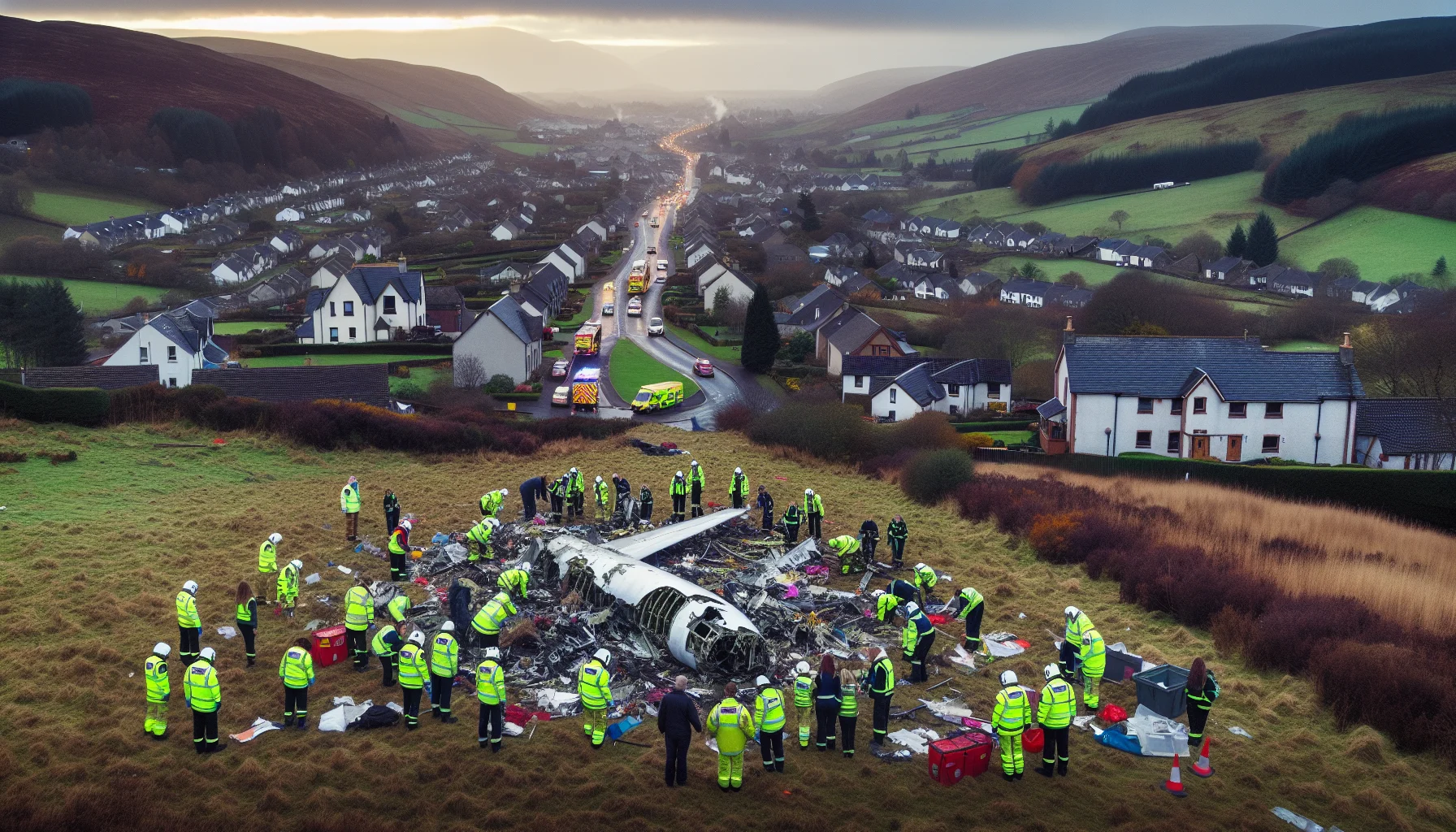
Pan Am Flight 103 Bombing
by: The Calamity Calendar Team
December 21, 1988
At the height of the holiday season, passengers aboard Pan Am Flight 103 were filled with a mix of anticipation and relief. Some were returning home for Christmas, while others were setting off for adventures in the United States. Clipper Maid of the Seas, as the aircraft was fondly called, carried 259 souls, each with unique dreams and stories. Sadly, none could foresee the tragedy that would unfurl over the quiet Scottish town of Lockerbie.
Prelude to Disaster
The Boeing 747 began its journey on December 21, 1988, ferrying travelers from Frankfurt to Detroit, with scheduled stops in London and New York City. Geopolitical tensions simmered underneath the mundane rituals of travel. The relationship between Libya and Western nations was edgy, with intelligence chatter sparking warnings of potential terror threats to aviation. Still, no one pinpointed Pan Am Flight 103 as a target.
As the plane departed from London's Heathrow Airport around 4:00 p.m. UTC, a delay with luggage handling caused a slight pushback in its timetable. It was a minor blip amidst a routine flight schedule. As the aircraft ascended into the skies, passengers settled into their seats, greeted by the customary indifference of seasoned flyers. The flight continued uneventfully until the early evening.
The Explosion
At about 6:25 p.m. UTC, Flight 103 reached its cruising altitude of 31,000 feet, smoothly gliding over the scenic landscape of southern Scotland. However, what appeared serene and routine suddenly shifted to an unimaginable nightmare. Approximately 38 minutes later, the unimaginable happened.
Scottish air traffic controllers' screens flickered—the brief communication blackout quickly morphed into terror when the plane was no longer visible. An explosion had rent the aircraft apart at precisely 7:03 p.m. UTC. The bomb, concealed inside a Toshiba radio within the luggage, detonated with vicious force, initiating catastrophic decompression and structural failure. The plane's twisted remains plummeted towards Lockerbie below, showering destruction over miles.
Lockerbie's Night of Devastation
Lockerbie, a quaint town nestled amidst Scotland's rolling green hills, was abrupty thrust into chaos. The wreckage rained down, brutally impacting the residential area of Sherwood Crescent. Eleven Lockerbie residents lost their lives amidst the destruction of homes and infrastructure; three houses were obliterated, leaving fiery scars across an otherwise peaceful setting.
Thanks for subscribing!
Emergency services raced to the scene, the December night air echoing with sirens over the town's devastation. Responders faced a heart-wrenching tableau—a landscape littered with unrecognizable debris, scattered possessions, and, inevitably, the human toll. Families and communities were shattered, their grief matching the scale of destruction.
A Complex Investigation
In the wake of this incomprehensible act, a massive international investigation unfolded, spearheaded by the UK's Air Accidents Investigation Branch. Forensic investigators combed through the wreckage, painstakingly reassembling fragments of the plane to piece together the precise sequence of events. In their detailed analysis, they identified the use of Semtex, a potent plastic explosive carefully stowed in the cargo hold.
As evidence mounted, the probe expanded into one of the most extensive criminal investigations in history. Political tensions escalated alongside the inquiry, linking the act to Libyan nationals. The international community, led by the United Nations, pressured Libya to address suspicions around its citizens. Sanctions were imposed in hopes of achieving justice for those affected by this cruel act.
Pursuit of Justice
It wasn't until 1991 when the veil of anonymity lifted from key figures associated with this heinous act—Abdelbaset al-Megrahi and Lamin Khalifah Fhimah were indicted. Diplomatic negotiations led Libya to surrender these individuals for trial at an extraordinary court session in the Netherlands, symbolizing an unprecedented alliance in international justice.
The lengthy legal battle crescendoed in 2001, with the conviction of al-Megrahi for murder, while Fhimah was acquitted. Sentenced to life imprisonment, al-Megrahi continued to profess his innocence, a persistent echo in unresolved debates over culpability and evidence sufficiency. Legal wrangling persisted; a posthumous appeal revived scrutiny of al-Megrahi's trial, pathways still challenging the absolution of justice.
An Unyielding Legacy
The fallout from Pan Am Flight 103 extended far beyond courtroom walls and the boundaries of Lockerbie. It reshaped air travel's fundamental tenets, catalyzing stringent reforms. Baggage checks became methodical, airport security saw transformative protocols, and international cooperation heightened to deter aviation terror. For Pan Am, the aftermath spelled financial catastrophe, contributing to its official dissolution in 1991.
Yet, decades elapsed without displacing the tragedy's imprint on Lockerbie or the collective memory of those lost. While answers unraveled, deeper questions persisted about accountability—the silent stories of victims and families echoed across the years. As investigative and legal journeys continue, the haunting resonance of Lockerbie's night remains an enduring monument to lives abruptly taken, their legacy enshrined in the pursuit of righteous clarity.
Stay in the Loop!
Become a Calamity Insider and get exclusive Calamity Calendar updates delivered straight to your inbox.
Thanks! You're now subscribed.